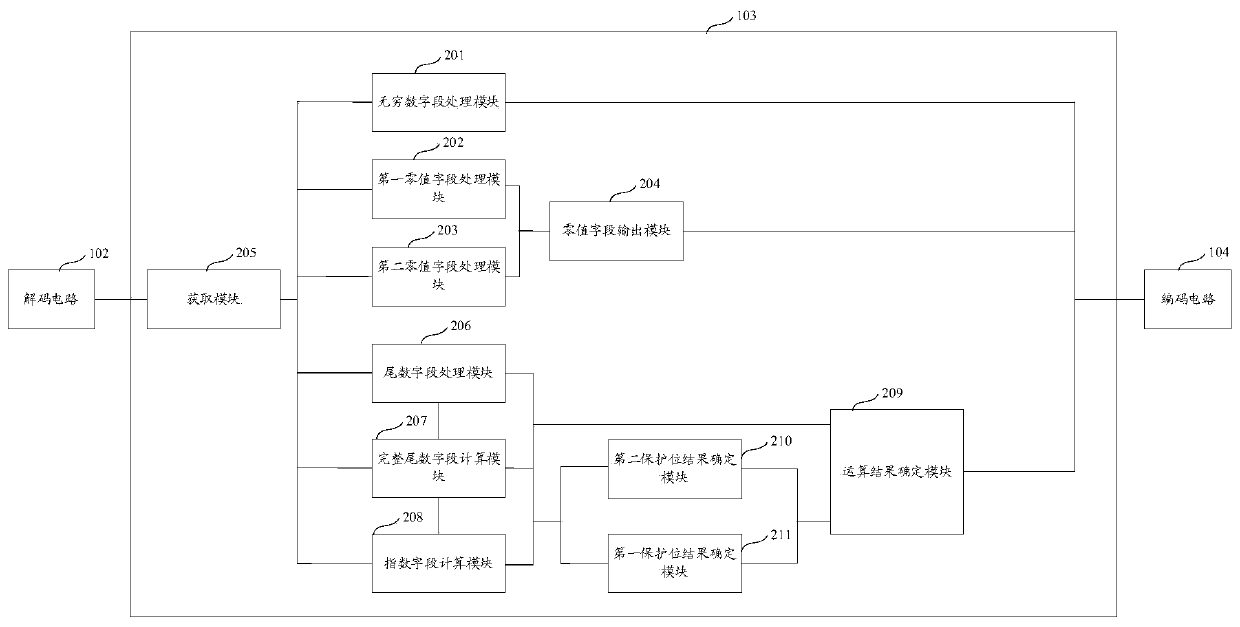Arithmetic processor and arithmetic processing system for Point floating-point numbers
An arithmetic processor and floating-point number technology, which is applied in the computer field, can solve the problems of complex and cumbersome Posit floating-point arithmetic logic and large circuit area of the arithmetic circuit, and achieves the effect of simple calculation logic, simple arithmetic circuit and high calculation efficiency.
- Summary
- Abstract
- Description
- Claims
- Application Information
AI Technical Summary
Problems solved by technology
Method used
Image
Examples
Embodiment Construction
[0055] The following will clearly and completely describe the technical solutions in the embodiments of the present application with reference to the drawings in the embodiments of the present application. Obviously, the described embodiments are part of the embodiments of the present application, not all of them. Based on the embodiments in this application, all other embodiments obtained by persons of ordinary skill in the art without creative efforts fall within the protection scope of this application.
[0056] Posit floating-point number is a new type of floating-point number standard (also called Unum floating-point standard, Posit is the third edition of Unum standard) proposed by John L. Gustafson, a professor at the National University of Singapore. Represents any real number in scientific notation. Take the real number M×2 e For example, M is the mantissa, 2 is the base, and e is the exponent. The data involved in the operation in the computer is expressed in binar...
PUM
 Login to View More
Login to View More Abstract
Description
Claims
Application Information
 Login to View More
Login to View More - R&D
- Intellectual Property
- Life Sciences
- Materials
- Tech Scout
- Unparalleled Data Quality
- Higher Quality Content
- 60% Fewer Hallucinations
Browse by: Latest US Patents, China's latest patents, Technical Efficacy Thesaurus, Application Domain, Technology Topic, Popular Technical Reports.
© 2025 PatSnap. All rights reserved.Legal|Privacy policy|Modern Slavery Act Transparency Statement|Sitemap|About US| Contact US: help@patsnap.com



